Temperature Regulation
The heat source for a Dutch oven can be either charcoal briquettes or campfire coals. Charcoal briquettes are the most convenient way to heat. They are of uniform size and emit an even, long-lasting heat that lasts for just over one hour. The use of campfire coals makes it more difficult to precisely regulate the temperature. They can initially burn hot, quickly go out and reduce the temperature.
The use of charcoal briquettes is also preferred because you can count the number of briquettes to control the temperature. A simple guideline for a constant 350° F heat is to match the diameter of the oven size, and then double the number of briquettes. For example, a 10 inch oven would have 10 briquettes on the top and 10 on the bottom in order to create a temperature of 350° F. The briquettes will then burn for about 50 minutes at this desired temperature.
For an 8 inch Dutch oven, use 8 briquettes on top and 8 on bottom. This will generate a 350° F temperature for about 50 minutes. It will gradually burn out and the oven's temperature will decrease.
Sometimes, such as in times of extreme cold, the oven may require additional briquettes, especially if there is a wind because the wind chill factor will influence heating.
Rarely is it too hot so as to require fewer briquettes, but this scenario is possible in temperatures exceeding 90° F. In such circumstances decrease the number of briquettes.
When baking pies, cakes, breads and rolls, fewer briquettes are placed on the oven's bottom and more briquettes are placed on top. For example, baking a pie in a 10 inch oven would require about 1/3 of the 20 briquettes on the bottom and 2/3 on top. This would prevent the bottom crust from burning and evenly cook the remainder of the pie. Pies don’t sit in the middle of the oven's lower one third. Hence, most of the pie is in direct contact with the bottom and far away from the top. To compensate, for even baking more heat is needed above.
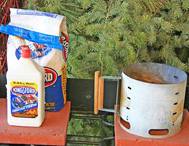
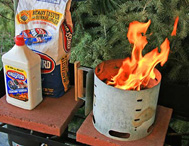
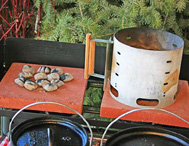
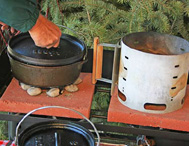
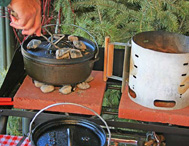
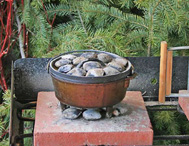
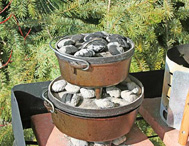
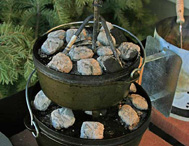
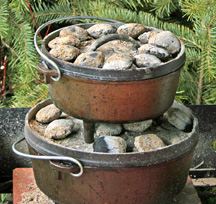
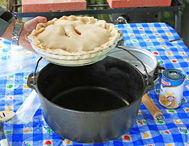
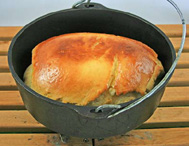
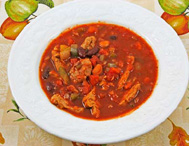
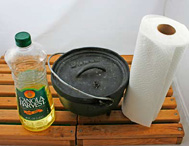
Camping Adventures • Dutch Oven Cooking • Sports Knots
Fly Tying • Freshwater Fishing • Fly Fishing

